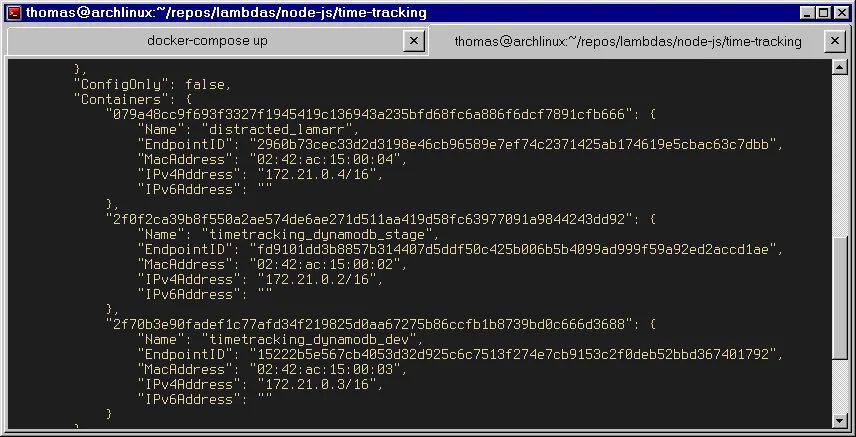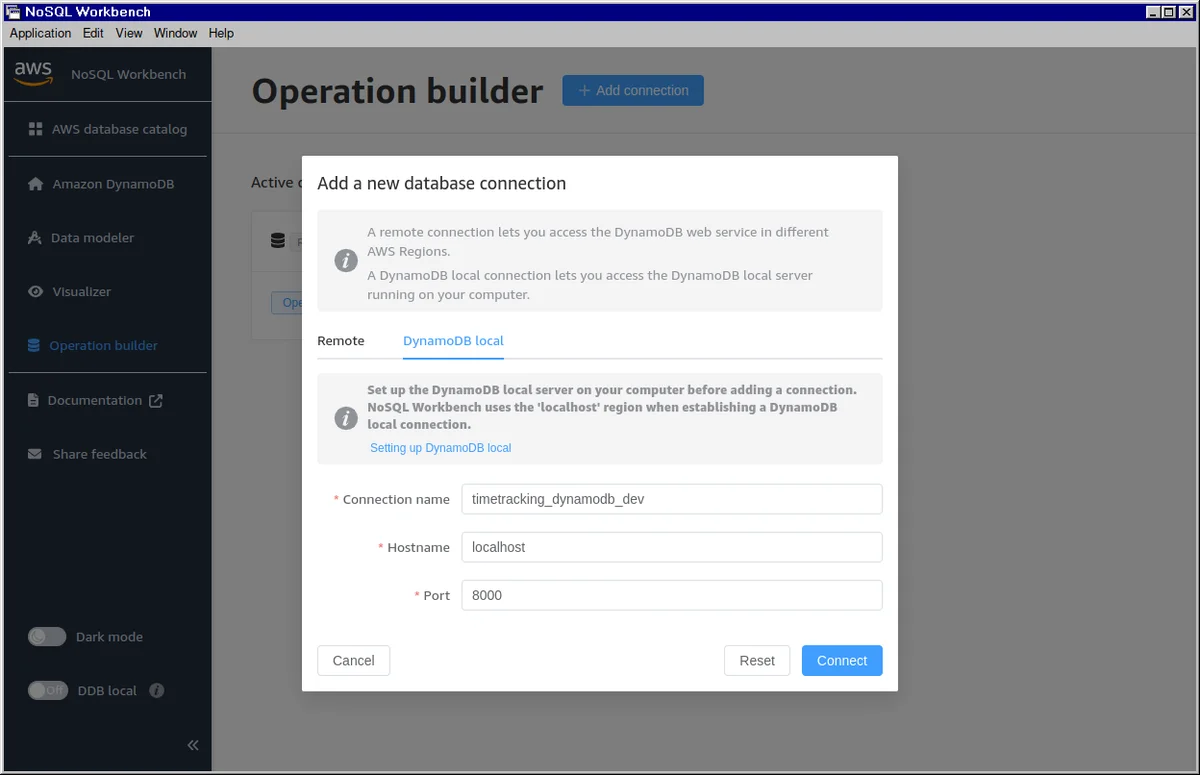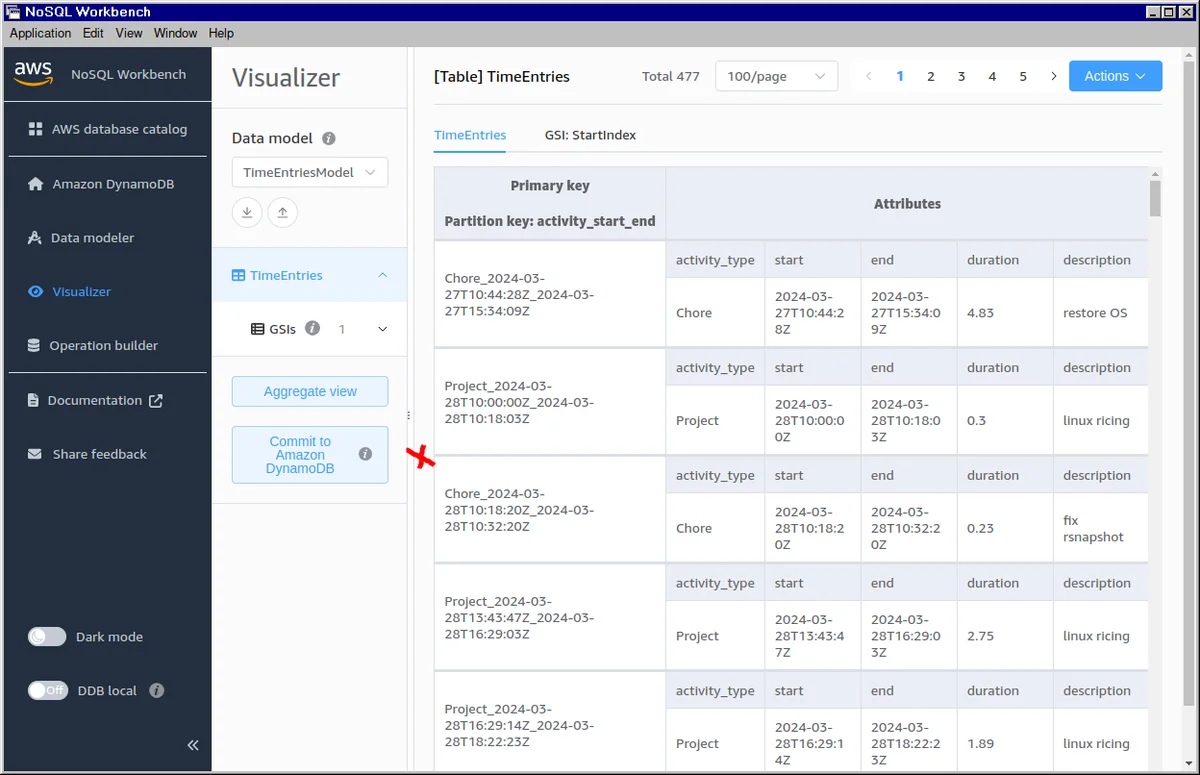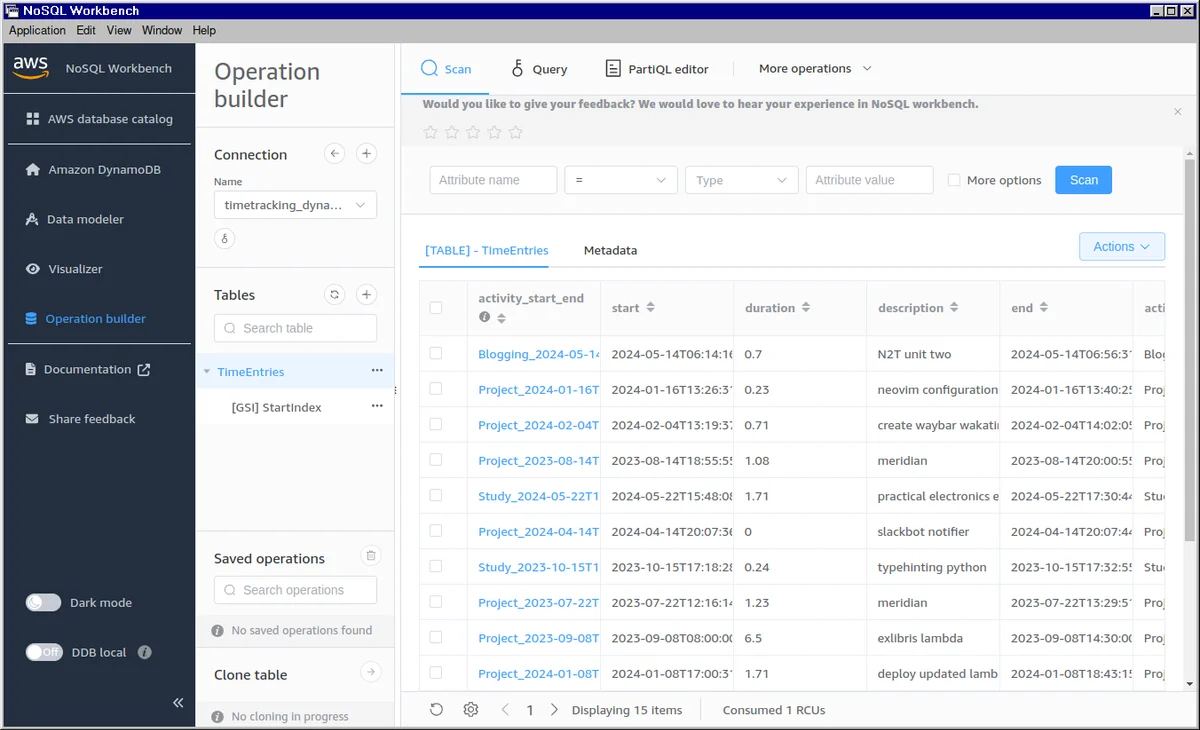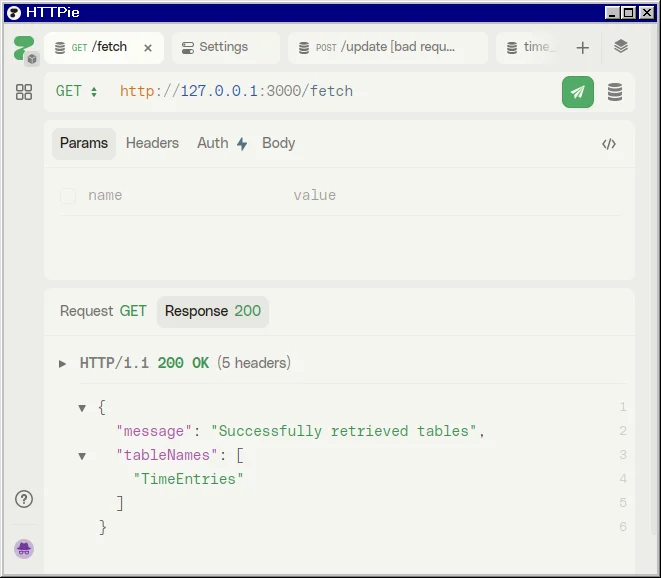5.2 KiB
| title | slug | date | tags | |||
|---|---|---|---|---|---|---|
| Getting a local DynamoDB instance working | /local-dynamodb-setup-sam/ | 2024-06-08 |
|
I wasted most of an afternoon trying to get the following set-up:
- Two local instances of DynamoDB running in Docker
- The ability to add table data to either instance via NoSQL Workbench and query it via an AWS lambda
If you are coming from SQLPro or DBeaver, Amazon's NoSQL workbench is a bit unintuitive. Creating the lambdas and the Docker containers was easy, it was getting them recognised by this client that was tricky. Anyway this is the process.
I want to set up two Docker instances of the amazon/dynamodb-local image,
along with a bridging network so that the Docker container that SAM runs in can
communicate with the containers that DynamoDB runs in. Hence docker-compose is
the way to go:
# docker-compose.yaml
version: "3.8"
services:
dev:
image: amazon/dynamodb-local
container_name: timetracking_dynamodb_dev
ports:
- "8000:8000"
volumes:
- "./data:/home/dynamodblocal/data"
networks:
- sam-local
stage:
image: amazon/dynamodb-local
container_name: timetracking_dynamodb_stage
ports:
- "8001:8001"
volumes:
- "./data:/home/dynamodblocal/data"
networks:
- sam-local
networks:
sam-local:
driver: bridge
My two DDB instances are dev and stage running on ports 8000 and 8001
respectively. Their shared network is called sam local.
After running docker-compose up. I run docker network ls and it confirms the
network has been created (it prepends the network name with the repo name):
Next comes SAM. I've just created the default Typescript Lambda template using
the SAM CLI. For now this will only expose a single API Gateway endpoint,
/fetch, which I will use to GET my DynamoDB table data. The key info from the
template:
# template.yaml
Resources:
TimeTrackingFunction:
Type: AWS::Serverless::Function
Properties:
CodeUri: src/
Handler: index.handler
Runtime: nodejs20.x
Architectures:
- x86_64
Events:
Fetch:
Type: Api
Properties:
Path: /fetch
Method: get
I'll use the following command to start the local APIGateway server:
sam build && sam local start-api --docker-network time-tracking_sam-local
If I run docker network inspect time-tracking_sam-local, I can confirm that
the SAM Docker instance (which AWS creates and which is effectively a black box
to me) is on the same network as the two DDB instances that I set up earlier:
Next I want to view my containers in NoSQL workbench so I can create the table
schema and start adding data. I'm just going to worry about the dev container
here. I go to the Operation builder and add a new connection:
This automatically generates an Access key ID and Secret access key even though this is a local service that won't interact with the production version in any way. You must use these. Some guides say you can put anything when connecting locally but in my experience this is not true.
Using these keys, I write a skeletal lambda just to check the connection via the AWS SDK for DynamoDB:
import { DynamoDBClient, ListTablesCommand } from "@aws-sdk/client-dynamodb"
const client = new DynamoDBClient({
region: "localhost",
endpoint: "http://dev:8000",
credentials: {
accessKeyId: "xxxx",
secretAccessKey: "xxxx",
},
})
export const handler = async (event: APIGatewayProxyEvent): Promise<APIGatewayProxyResult> => {
try {
const command = new ListTablesCommand({})
const response = await client.send(command)
return {
statusCode: 200,
headers: { "Content-Type": "application/json" },
body: JSON.stringify({
message: "Successfully retrieved tables",
tableNames: response.TableNames,
}),
}
...
The first problem because I wasn't providing a region. Why would I, this is
local? But it needs to be localhost. And again, you must put the actual
credential values that the Workbench gives you.
The next issue was that this function was returning an empty array when I
queried the /fetch endpoint. Even though I had set up a table in Workbench:
You must click Commit to Amazon DynamoDB even though this is counter-intuitive and suggests you are going to auto-provision paid services! You can then select the local instance that you are going to seed with the table from the model:
Now if you back to Operation builder, the table is associated with the given instance and the data is displayed:
On reflection, this makes a lot of sense as it decouples the data model from any particular instance (local or production) that uses the data and makes it easy to seed different tables to different database instances.
So finally, if I now query the fetch endpoint, I get the table name returned,
demonstrating that all the different parts have joined up:

